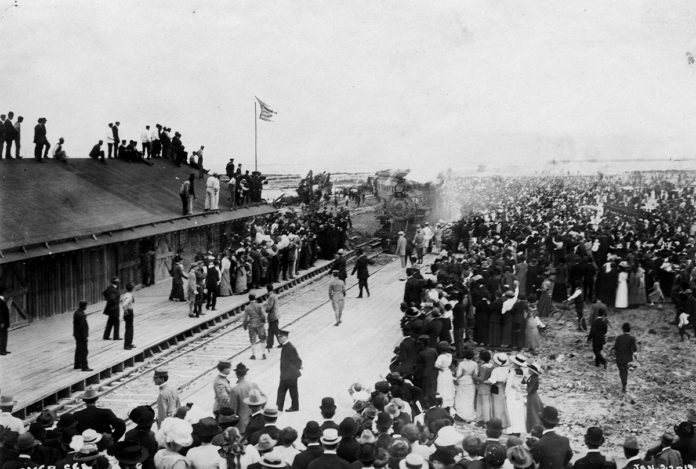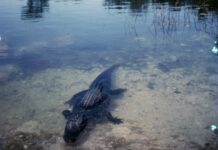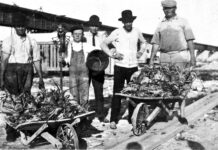
The Arrival of Henry Flagler, Key Lime Pie, and the Completion of the Over-Sea Railroad
History is interesting. Well, history can be interesting. Indeed, some people find it more interesting than others. Reading a list of dates associated with specific, generally notable events is not very interesting. However, garnish those dates like a Michelin star-rated chef presents a perfectly toasted grilled cheese sandwich, and that list of dates is going to appear as something of note. Sprinkling in a few facts helps. Pictures add something. Connect a date with an event in the context of a larger story, and it might elicit a few historical oohs and aahs.
That’s what we’re going to do here. The date will be 1912, a year when several notable historical events occurred. The Boston Red Sox’s home field, Fenway Park, was just opened. The Girl Scouts of America were founded, the Titanic sank after it struck an iceberg on April 14, the Dixie Cup was invented and Zane Grey published “Riders of the Purple Sage.” However, fans of the Key West Extension of Henry Flagler’s Florida East Coast Railway might recognize 1912 as the first time Flagler rode his train from mainland Florida to Key West.
The Jan. 22, 1912 event is well-documented, with newspaper accounts and pictures showing thousands of people gathered around the train tracks to celebrate. Flagler’s arrival on that Monday morning is undoubtedly the most celebrated event in the history of the train line. One of the people in attendance that day was 12-year-old Marvin Thompson, the son of the man who founded Key West’s Thompson Cigar Company. The company, established in 1915, remains today the oldest mail-order cigar company in the world.
Marvin would record his memories of that day in a story called “The First and Last Trains” that appeared in the Key West Citizen’s March 6, 1967 edition. His observation about the food that was served that day provides some interesting details about the culinary history of the Keys. He wrote, “Many tents had been erected on the man-made desert that was Trumbo for the comfort of the thirsty and hungry throngs. Baked ham and pork sandwiches were consumed as fast as the church ladies could turn them out. Wooden wine barrels filled with Key lime juice mixed with sugar, syrup and cooled with chunks of ice made a limeade that could not be equaled. Guava pie and fresh coconut ice cream also hit the spot. Other raters on the menu were turtle stew, crawfish enchiladas and conch chowder, topped off with genuine Key lime pie.”
Focusing, for a moment, on his mention of Key lime pie, in 1912, the sweetly tart dessert synonymous with the Florida Keys would have simply been called lime pie. The addition of “Key” to modify the lime’s identification was essentially a marketing ploy established in 1939 to draw attention to limes grown along the island chain. By 1969, when Thompson wrote the article, the common term for the pie had become Key lime pie. Whatever it was called, the lime pie was a popular staple in the Florida Keys that dates back, at the very least, to 1912.
Stella Parks questioned the origins of the quintessential Florida Keys dessert in her 2017 book “BraveTart: Iconic American Desserts.” She claims the Conch Republic’s national pie was invented in 1931. Her more outrageous claim was that Key lime pie was created in a New York test kitchen! Clearly, she was mistaken. However, the Key lime narrative, engaging as it seems (at least to me), is not the reason to focus on the arrival of Henry Flagler aboard his private rail car in Key West on Jan. 22, 1912.
At first glance, the 1912 arrival date seems to indicate the completion of what had been dubbed “Flagler’s Folly” by his detractors. However, when Flagler arrived on that Monday morning, the Over-Sea Railroad was still not technically finished. Because his health was failing, there was a push to finish enough of the railroad for him to be able to experience the dream ride of his life aboard his train from the mainland to the southernmost terminus at Key West.
However, in 1912, the train used several temporary bridges, including the Channel 2 and Channel 5 bridges that connected Lower Matecumbe to Craig Key. When the Flagler Special rocked, rolled, clicked and clacked over these two wooden trestle bridges, the permanent concrete Channel 2 and Channel 5 bridges were still under construction. Though the train continued to travel back and forth between Key West and the mainland daily, it would not be until 1916 that the last of the permanent bridges were completed and the Key West Extension of Henry Flagler’s East Coast Railway was officially completed. Henry Flagler would pass away at the age of 83, on May 20, 1913.

























